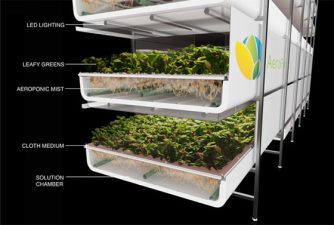 Pet owners in the Middle East pay lots for imported pet food. Miriam offers recipes for Fido’s food with locally sourced ingredients to keep him healthy, save money, and reduce carbon emissions.
Pet owners in the Middle East pay lots for imported pet food. Miriam offers recipes for Fido’s food with locally sourced ingredients to keep him healthy, save money, and reduce carbon emissions.
A dog somewhere on the street howled pitifully, all day and all night. Neighbors told us that her owner had gone abroad, leaving money and the house keys with a student who was supposed to feed and walk her. Who didn’t. We tracked down the negligent student and brought the poor animal home till her owner returned. Then we cooked for her. Cook for a dog? Whaddaya, crazy?
Well, no. We need to consider sustainability and health in our pet foods just as much as in our own foods. Home-made dog food is far healthier than the commercial stuff. It costs very little and is easy to make. And it makes ecological sense to rely on fresh, local ingredients rather than on packaged pet food imported from countries thousands of miles away. In some countries, like in Germany, natural pet food sales are growing faster than human ones.
Internet research for dog-food recipes turned up a load of information on commercial pet foods. Sites like Born Free investigate and report on what’s really in Fido’s dish. Things like cattle scraps and offal that can’t be sold for human consumption: heads and feet, fetuses discovered after slaughter, bones. Protein derived from sick animals who died days before getting processed into pet food.
The list of horrors goes on. Synthetic preservatives. An overload of fillers: carbohydrate-heavy foods in place of the animal protein that dogs and cats really need. Rendered animal fats sprayed onto vitamin-deficient foods to make them smell appetizing to pets. Pesticides.
Small wonder that today’s pets suffer from ailments formerly unheard-of in animals: diabetes, allergies, obesity, dental disease, heart disease, hyperthyroidism. But you can keep your pet in the greatest shape, without much effort, by whipping up home-made foods like these:
Dog Food (method at allrecipes.com)
- 3 pounds minced chicken meat
- 2 1/2 cups frozen vegetable blend (no garlic or onions), minced
- 4 cups rice
- 6 1/2 cups water
Doggy Biscuits (method at allrecipes.com)
- 2 cups whole wheat flour
- 1 cup cornmeal
- 1 tablespoon salt
- 1/3 cup vegetable oil
- 1 egg
- 1 cup water
Kitty Breakfast (method at about.com)
- 1 Tbsp. nonfat dry milk
- 3 medium eggs
- 3 Tbsp. cottage cheese
- 2 Tbsp. grated veggies
A few tips:
- Talk to your vet about weaning your pet from commercial to real food. Doing it all at once might stress the pet’s digestion. Your vet should know your pet’s individual needs (and what foods to avoid).
- Dogs need a balance of 40% meat, 30% permitted vegetables (not all are good for pets) and 30% starch. Cats need 50% meat, eggs, or dairy, and the rest grains and vegetables. Balance It helps you figure out cat or dog’s calorie needs.
- Vary ingredients. Eating the same food every day won’t supply his overall nutritional needs.
- The jury is still out on the danger or healthiness of garlic in pet food, but certainly no onions, chocolate, or bones.
You’ll enjoy reading more green news on animals and humans:
Owls Unite Arab Farmers
Israel Camel Racing May Suffer For Lack of Humps
Toads Could Predict Deadly Mideast Earthquakes
“Chinese Dog Food” image by azrainman via Flickr.




It really horrifies me to think of the contents of dog food especially the meat of a cattle that died a couple of days because of some disease. Think of the disease it will bring to our pets who will eat that dog food? It is then best to make our own dog food because we know what ingredients we put in there and we know the process of doing it. Unlike pre-made dog food, we do not know the process it undergoes and the chemicals mixed in it.
LOL…it IS a little strange at first to cook dog food since it has people-food ingredients. But you get used it. Like cooking Baby’s food separately from the high-chili tacos you’re serving the grownups.
Update: I actually went to the market just to get stuff to cook for my dog… Now he’s happy, but my wife is feeling neglected.
Excellent tip from Judy on blending the vegetables before adding them to the dog’s diet. And if this post has inspired Tal (or any other reader) to feed her pet only the best, it makes my day.
Great article.
You’ve inspired me to try making some for my dog… We’ve already been using him as a home composting unit (vegetables, rice, meat… nothing but good stuff), but it will be good to get off the packaged dog food completely.
Check out the tip I posted here last year (as well as a photo of Mr. Compost himself).
http://www.greenprophet.com/2009/02/17/7027/double-the-amount-of-plastic-you-recycle/
I use my dog as a composter too. She loves veggies. Talked to a vet and she said it’s okay that we feed her cabbage and various other veggies. The dog loves the supplement.
You should puree the veggies in a food processor or the dog will not get the nutrients. In the wild, the only veggies or fruit a dog would eat would be what was in the stomach of his/her prey at the time.
I also add blueberries & scrambled eggs to my dogs’ homemade food.